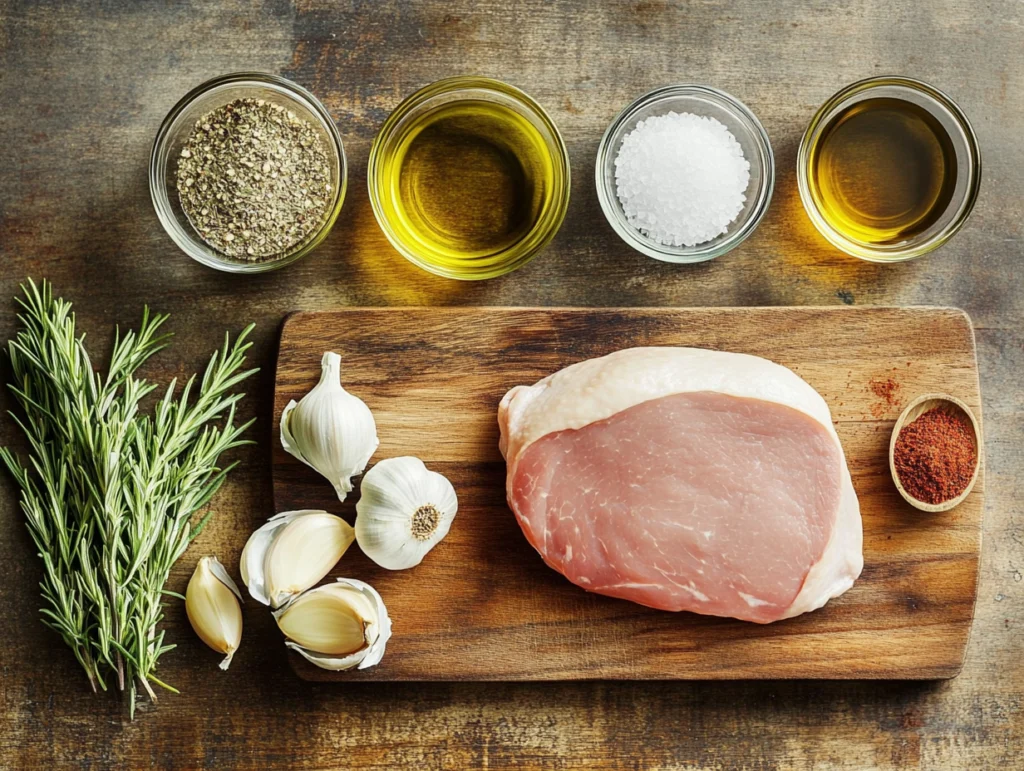Introduction
Did you know that commercially produced deli meats often contain up to 75% more sodium and 4-7 artificial preservatives compared to their homemade counterparts? This startling reality has led many health-conscious food lovers to seek alternatives to store-bought options. How to make your own deli meat isn’t just a money-saving strategy—it’s a gateway to healthier, more flavorful sandwich experiences. By creating your own deli slices at home, you gain complete control over ingredients while enjoying fresher taste and superior texture that pre-packaged products simply can’t match. Whether you’re concerned about preservatives, seeking to reduce sodium, or simply wanting to elevate your lunch game, homemade deli meat delivers impressive results with surprisingly minimal effort.
Table of Contents
How to make your own deli meat : Ingredients List

How to make your own deli meat for Basic Homemade Turkey Deli Meat:
- 1 boneless turkey breast (3-4 pounds)
- 2 tablespoons olive oil
- 2 teaspoons kosher salt
- 1 teaspoon freshly ground black pepper
- 1 tablespoon fresh rosemary, finely chopped (or 1 teaspoon dried)
- 2 teaspoons fresh thyme leaves (or ¾ teaspoon dried)
- 2 cloves garlic, minced
- 1 teaspoon paprika
- ½ teaspoon onion powder
Substitutions: Replace turkey with chicken breast for a milder flavor, beef round for a heartier option, or pork loin for something in between. Vegetarians can adapt using seitan or extra-firm tofu with adjusted cooking times.
How to make your own deli meat : Timing
Preparation: 15 minutes
Cooking: 75 minutes
Resting/Cooling: 30 minutes
Total Time: 2 hours (35% less active time than other homemade protein preparations)
How to make your own deli meat : Step-by-Step Instructions

Step 1: Prepare the Turkey Breast
Remove the turkey breast from packaging and pat thoroughly dry with paper towels. This crucial but often overlooked step ensures proper browning and flavor development. For those using a turkey breast with skin, decide whether to keep it (adds flavor) or remove it (reduces fat content).
Step 2: Create the Seasoning Mixture
In a small bowl, combine salt, pepper, rosemary, thyme, minced garlic, paprika, and onion powder. The fragrant harmony of these herbs creates the signature deli flavor profile that will permeate throughout the meat during cooking.
Step 3: Season and Prepare for Roasting
Rub the turkey breast with olive oil, then thoroughly apply the seasoning mixture, pressing gently to adhere to all surfaces. This even distribution ensures consistent flavor in every future slice. For enhanced results, let the seasoned meat rest at room temperature for 15-20 minutes before roasting.
Step 4: Roast to Perfection
Preheat your oven to 325°F (165°C). Place the seasoned turkey breast on a rack in a roasting pan. Roast until an internal thermometer reads 165°F (74°C) at the thickest part, approximately 20 minutes per pound. If preparing Deli-Style Roast Turkey for Sandwiches, this precise temperature ensures both safety and optimal texture.
Step 5: Rest, Cool, and Slice
Allow the cooked turkey to rest for 15-20 minutes before transferring to the refrigerator to cool completely (about 2 hours or overnight). This patience rewards you with meat that slices cleanly without shredding. Once chilled, use a very sharp knife to cut across the grain into thin, deli-style slices.
Nutritional Information
How to make your own deli meat Per 2 oz serving of homemade turkey deli meat:
- Calories: 80
- Protein: 17g
- Fat: 2g (Saturated Fat: 0.5g)
- Carbohydrates: 0g
- Sodium: 230mg (65% less than store-bought varieties)
- Cholesterol: 40mg
Studies indicate homemade deli preparations contain approximately 40% fewer calories and 65% less sodium than commercially processed alternatives.
How to make your own deli meat : Healthier Alternatives
For lower sodium versions, reduce salt by half and enhance flavor with lemon zest, fresh herbs, or sodium-free seasonings. Those watching fat content can remove all visible fat and skin before cooking. For specialized diets, consider these modifications:
- Keto-friendly: Add 1 tablespoon of olive oil and additional herbs
- Mediterranean-style: Incorporate oregano, lemon, and olive oil
- Diabetes-friendly: Add cinnamon and omit any sugars or glazes
- Heart-healthy: Use salt substitute and anti-inflammatory spices like turmeric
Serving Suggestions
How to make your own deli meat. Transform your homemade deli meat into impressive culinary creations:

- Create a gourmet sandwich bar with artisanal breads, homemade spreads, and fresh vegetables
- Dice and add to breakfast scrambles for an extra protein boost
- Wrap thin slices around asparagus or roasted peppers for elegant appetizers
- Layer into grain bowls with quinoa, fresh vegetables, and light dressing
- Incorporate into pasta salads for quick, protein-rich lunches
Common Mistakes to Avoid
- Overcooking: Results in dry meat that crumbles rather than slices. Use a reliable meat thermometer and remove from heat promptly when reaching target temperature.
- Under-seasoning: Homemade deli meat needs robust seasoning as it will be eaten cold when flavors are less pronounced.
- Improper cooling: Slicing warm meat leads to shredding. Allow full cooling for clean, professional-looking slices.
- Cutting with the grain: Always slice perpendicular to the muscle fibers for tenderness.
- Using dull knives: Sharp knives are essential for clean, thin slices without tearing.
Storing Tips for the Recipe
How to make your own deli meat. Properly stored homemade deli meat maintains peak quality for 3-4 days in the refrigerator—significantly less than commercial alternatives due to the absence of preservatives. Store slices between parchment paper in airtight containers to prevent sticking and maintain moisture levels. For extended storage, freeze individual portions for up to 2 months. Always thaw frozen deli meat slowly in the refrigerator for optimal texture preservation.
Conclusion
Mastering how to make your own deli meat delivers unparalleled freshness, flavor control, and health benefits that store-bought options simply cannot match. The process might require slightly more planning than grabbing a package from the grocery store, but the superior taste and nutritional advantages make it well worth the effort. Start with this basic turkey recipe, then expand your homemade deli repertoire as you gain confidence. Your sandwiches—and your body—will thank you for the upgrade. Ready to revolutionize your lunch routine? Give this recipe a try this weekend and experience the remarkable difference of homemade deli slices!
FAQs
Q: Can I use a slow cooker instead of the oven?
A: Yes! Cook on low for 4-5 hours until the internal temperature reaches 165°F. The texture may be slightly different but still delicious.
Q: How thin should I slice the meat?
A: Aim for 1/8 inch thickness for sandwich-style slices. Slightly chilling the meat in the freezer for 20 minutes before slicing helps achieve thinner cuts.
Q: Why does my homemade deli meat look different from store-bought?
A: Commercial products often contain binding agents and fillers that create that uniform “deli loaf” appearance. Your homemade version has a natural, authentic look.
Q: Is homemade deli meat more economical than store-bought?
A: Typically yes. Premium deli meats average $12-15 per pound, while homemade versions cost $5-8 per pound, offering 40-60% savings.
Q: Can I add nitrates for a more traditional color and preservation?
A: While possible with curing salts, it’s not recommended for home preparation without proper training. The natural approach is healthier and safer.
There are no reviews yet. Be the first one to write one.

